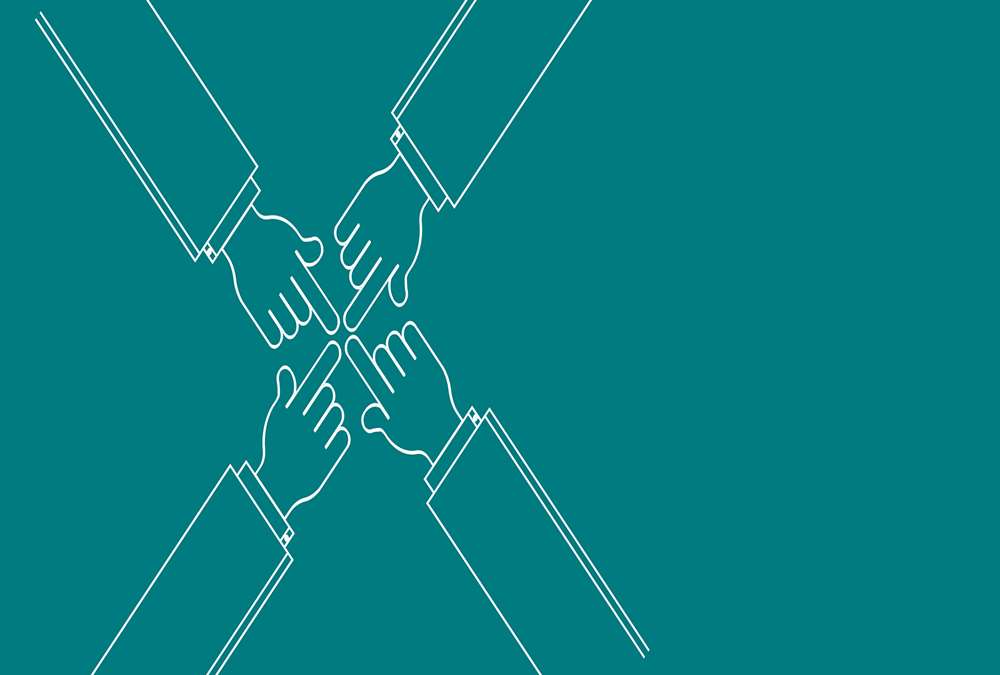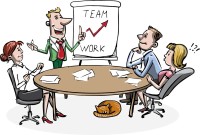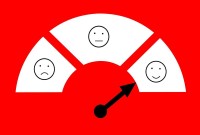- Home
- Business Processes
- Industry Knowledge
- Aerospace Industry
- Automotive Industry
- Banking Domain
- BFSI Industry
- Consumer/ FMCG Industry
- Chemicals Industry
- Engineering & Construction
- Energy Industry
- Education Domain
- Finance Domain
- Hospitality Domain
- Healthcare Industry
- Insurance Domain
- Retail Industry
- Travel and Tourism Domain
- Telecom Industry
- Leadership Skills
- eLearning
- Home
- Domain Knowledge
- Management Concepts
- Eight Types of Teams
Eight Types of Teams
Many different types of teams have been identified by social scientists. Managers may encounter the diverse types of challenges while managing different kinds of teams. Challenges associated with Cross-Functional Teams might be different from that of a Geographically Dispersed Team or a Virtual Team. This article explores some common categories and subtypes of teams.
Teams are organized in different ways; teams may be suited to different purposes and can be classified based on their dependence, authority, location, purpose, time, and many other attributes. If you understand the taxonomy of teamwork you'll be a better leader and a better team player.
1: Independent and Interdependent Teams
Independent Team:
An independent team is a team where all team members are able to perform the same basic tasks independently. They may be able to help each other, perhaps by offering advice or by providing moral support, but each individual's success is primarily due to each individual's own efforts. For example, Chess players do not win their own matches merely because the rest of their teammates did, and math students do not pass tests merely because their neighbors know how to solve the equations.
Interdependent Team:
In an interdependent team, no significant task can be accomplished without the help and cooperation of any of the members; within that team members typically specialize in different tasks and the success of every individual is inextricably bound to the success of the whole team. An interdependent team benefits from getting to know the other team members socially, from developing trust in each other, and from conquering artificial challenges.
2: Formal and Informal Teams:
Formal Teams:
Formal teams or groups are created deliberately by managers carrying out specific tasks to help the organization achieve its goals. The most prevalent type of formal group is the command team, which includes a manager and all employees who report to that manager. Another type of formal team is the committee, which generally lasts a long time and deals with recurrent problems and decisions. Some formal teams are temporary. They may be called task forces or project teams. These teams are created to deal with a specific problem and are usually disbanded when the task is completed or the problem is solved.
Informal Teams:
Informal teams or groups emerge whenever people come together and interact regularly. Such groups develop within the formal organizational structure. Members of informal teams tend to subordinate some of their individual needs to those of the team as a whole. In return, the team supports and protects them. The activities of informal teams may further the interests of the organization. Saturday morning games, for example, may strengthen the player’s ties to each other.
3: On the basis of Purpose or Mission:
Along this dimension, teams can be divided into work teams and improvement teams.
Work Teams:
Work teams are primarily concerned with the work done by the organization, such as developing and manufacturing new products, providing services for customers, and so on. Their principal focus is on using the organization’s resources to effectively create its results. Work teams are responsible for the actual act of creating tangible products and services. The actual workers on an assembly line would be an example of a production team, whereas waiters and waitresses at a diner would be an example of a service team.
Improvement Teams:
Improvement teams are primarily oriented towards the mission of increasing the effectiveness of the processes that are used by the organization. For example, most companies nowadays have quality teams who focus on improving the quality of operations across the company or processes.
4: On the basis of Time:
A team is any group of people organized to work together interdependently and cooperatively to meet the needs of their customers by accomplishing a purpose and goals. Teams are created for both long term and short term interaction.
Short Term Teams:
Some teams are only temporary and are established for a specific project with a finite life. A product development team, an executive leadership team, and a departmental team are long-lasting planning and operational groups. Short term teams might include a team to develop an employee onboarding process, a team to plan the annual company party, or a team to respond to a specific customer problem or complaint.
Long Term Teams:
Other kinds of teams are permanent and stay as long as the organization is operating. For example, teams focusing on providing effective customer service tend to be permanent parts of many organizations.
5: On the basis of Authority structure:
In some organizations, teams may cross over various functional units (e.g., marketing, finances, human resources, and so on). Such arrangements are often difficult because of ambiguities regarding authority. By contrast, some organizations use teams that are intact with respect to the existing structure of the organization. Companies like General Motors are structured such that people work together on specific products all the time and do not apply their specialty to a wide range of products.
6: Functional, Cross-functional & Self-Managing:
Functional or departmental Teams: Groups of people from the same work area or department, who meet on a regular basis to analyze customer needs, solve problems, provide members with support, promote continuous improvement, and share information.
Cross-Functional Teams:
Groups of people who are pulled together from across departments or job functions to deal with a specific product, issue, customer, problem, or to improve a particular process.
Self-Managing Teams:
Groups of people who assume responsibility for self-direction in all aspects of work are called self-managing teams.
7: On the basis of Nature of Work:
Executive Team:
An executive team draws up plans for activities and then directs these activities. An example of an executive team would be a construction team designing blueprints for a new building and then guiding the construction of the building using these blueprints.
Command Team:
The goal of the command team is to combine instructions and coordinate action. In other words, command teams serve as the “middle man” in the task. For instance, messengers on a construction site, conveying instructions from the executive team to the builders would be an example of a command team.
Project (cross-functional) Teams:
A team used only for a defined period of time and for a separate, concretely definable purpose, often becomes known as a project team. Managers commonly label groups of people as a "team" based on having a common function. Members of these teams might belong to different groups, but receive an assignment to activities for the same project, thereby allowing outsiders to view them as a single unit. In this way, setting up a team allegedly facilitates the creation, tracking, and assignment of a group of people based on the project in hand. This category of teams includes negotiation, commission, and design-team subtypes. In general, these types of teams are multi-talented and composed of individuals with expertise in many different areas, with the goal of using this combination of talent to produce fresh solutions and innovative products. Negotiation teams serve to persuade, commission teams make tactful judgments and decisions about sensitive subjects, and design teams are charged with generating strategies.
Advisory (parallel) Teams:
Advisory teams make suggestions about a final product. For instance, a quality control group on an assembly line would be an example of an advisory team: they would examine the products produced and make suggestions about how to improve the quality of the items being made.
Action Teams:
Action teams are highly specialized and coordinated teams whose actions are intensely focused on producing a product or service. An NFL football team would be an example of an action team. Other examples are the military, paramedics, and transportation.
8: On the basis of Location:
Co-located Teams:
These are the traditional teams which are go located in one place and work together for a common goal.
Virtual Teams:
Developments in communications technologies have seen the emergence of the virtual work team. A virtual team is a group of people who work interdependently and with a shared purpose across space, time, and organization boundaries using technology to communicate and collaborate. Virtual team members can be located across a country or across the world, rarely meet face-to-face, and include members from different cultures.
Related Links
You May Also Like
-
The development of teams is an ongoing process because the composition of the team may keep on changing. The new members may join and the old members may leave the team. The team members pass through several stages for the development of the team and there has been a lot of research to identify these stages. In this article, we discuss the common theories of team development.
-
Generating Ideas using SCAMPER
SCAMPER is an activity-based thinking process that can be performed by Cooperative learning. SCAMPER is an acronym that provides a structured way of assisting students to think out of the box and enhance their knowledge. This can be used in the organizational context as a technique for creative problem solving and as a toolkit to generate fresh ideas.
-
Building Perfect Creative Team
One misconception around creativity is that creative act is essentially solitary. Most of the world's important inventions resulted not from the work of one lone genius, but from collaboration of a team with complementary skills. Managers should build teams with the ideal mix of traits to form a creative group and then establish the conditions that make creativity much more likely to occur.
-
Benefits of Teams in Workplace
The use of formal work teams is commonplace in modern organizations. But why we have teams? What are the benefits or advantages that teams provide for organizations and employees? Do we really need to adopt formal team structures and use team-building approaches in organizations? Read this article to explore and learn the benefits of having formal teams in organizations.
-
Collaborative leadership is all about collaborative problem-solving and decision-making or can also be defined as the leadership of a collaborative effort. . The term started to appear in the mid-1990s in response to the formation of long term public-private partnerships to rebuild public infrastructure. Learn how you can use principles of collaborative leadership to enhance your leadership skills for being an effective leader.
-
Team leadership theory is a recent leadership theory that does not discriminate between the leader and the other team members. The approach considers contributions from each team member to be critical for organizational success. This approach focused on the overall team effectiveness and team problems are diagnosed and action is taken to remediate weakness. This approach provides for taking corrective action when the leader deems necessary.
-
All the teams are dynamic in nature and they take time to come together, they form, develop, and grow in stages, over a period of time. Teams go through five progressive stages: Forming, Storming, Norming, Performing and Adjourning. In this article, we want to introduce you to these stages of team development and certain strategies that you can use to help the team grow and develop in each of these stages.
-
Many people think communication is easy. It is said that communication can never be a hundred percent complete. Many factors are involved in the process of communication and something can always go wrong with one or more of these. It becomes difficult and complex when we put barriers in communication. Recognize barriers to interpersonal communication and examine specific strategies for overcoming those barriers.
-
Facilitative Leadership is all about involving the employees in the decision-making process at all levels enhancing their sense of ownership, responsibility, and motivation. Facilitative leadership style uses a number of indirect communication patterns to help the group reach consensus and build commitment for the decision taken. To be effective in modern organizations, managers need to become facilitative leaders, learn what it means to be a one.
-
Process & Stages of Creativity
Creative ideas do not come just like that. There is a process to it. There are a number of techniques of creativity to support the generation of ideas but the widely practiced ones are brainstorming and lateral thinking. Most innovations are not so much the product of sudden insights as they are the result of a conscious process that often goes through multiple stages. The creative process can be divided into four stages of preparation, incubation, evaluation, and implementation.
Explore Our Free Training Articles or
Sign Up to Start With Our eLearning Courses

About Us
Learning
© 2023 TechnoFunc, All Rights Reserved










